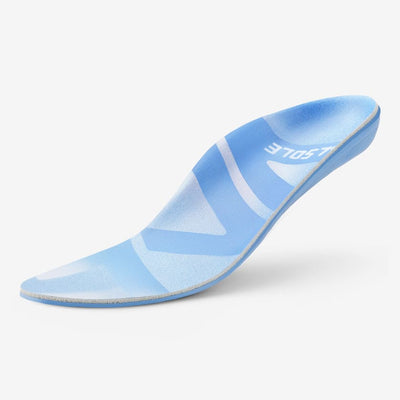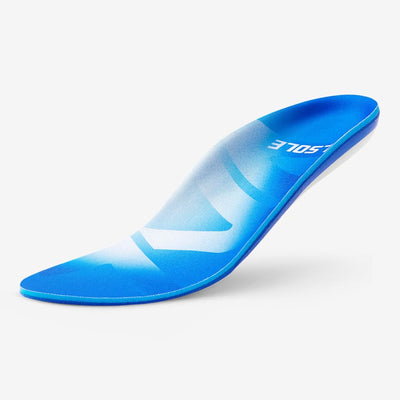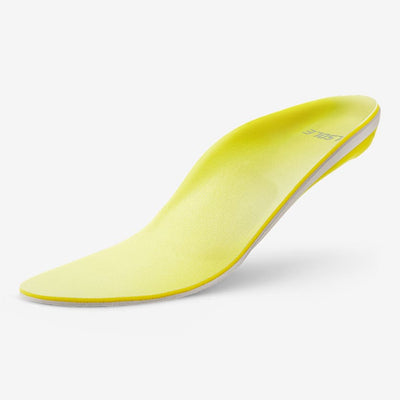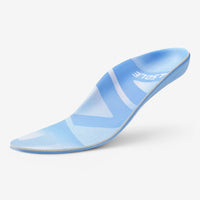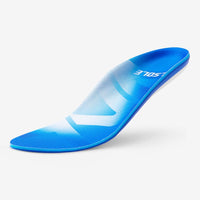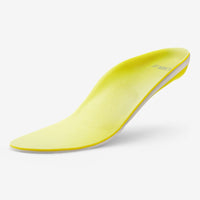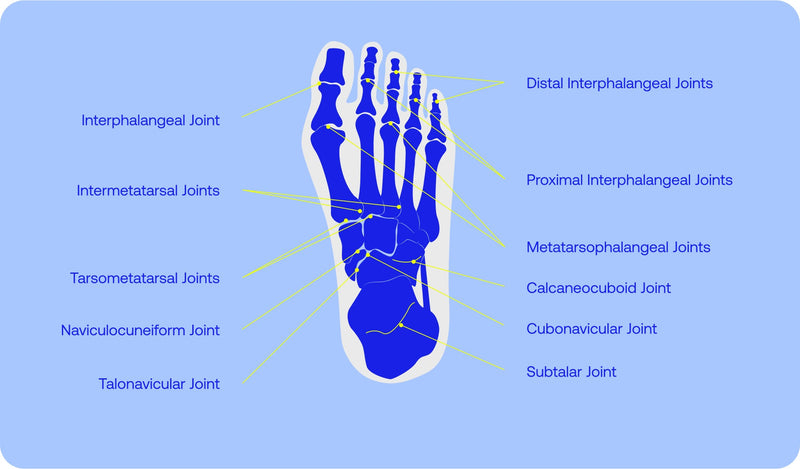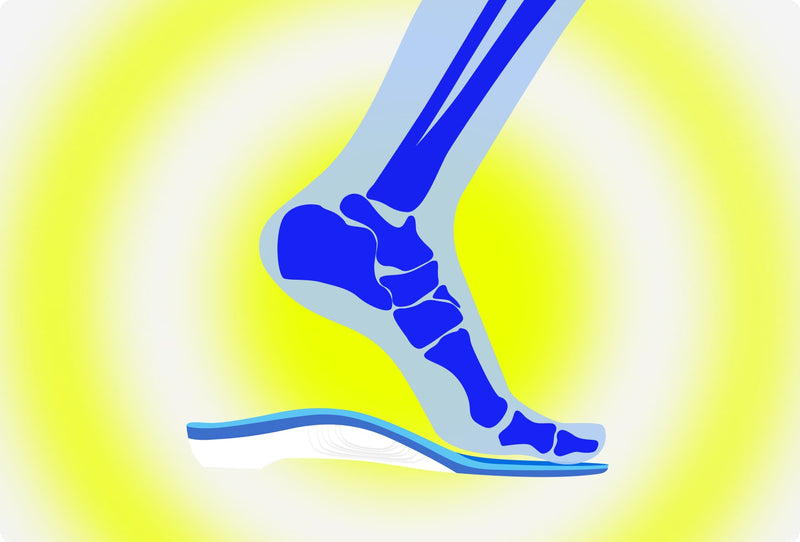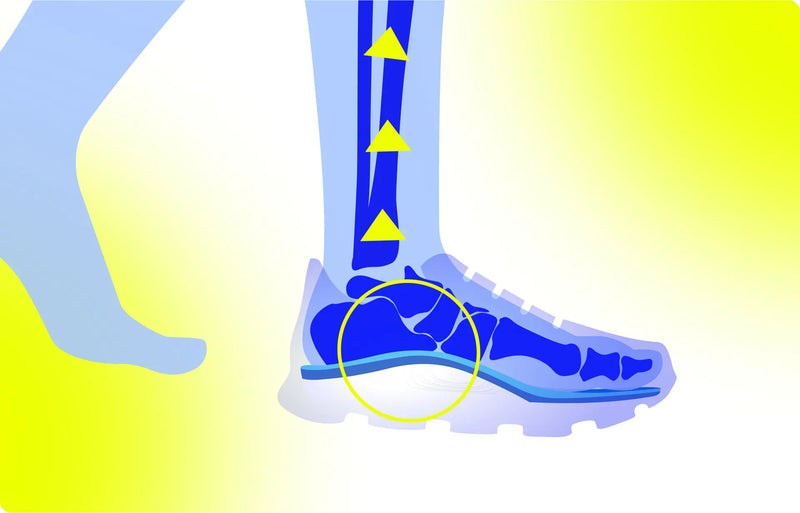Foot Health and Back Pain: Understanding the Connection

This article explores the link between foot health and back pain, shedding light on how misalignment in the feet can lead to discomfort or even chronic pain in the lower back. It discusses how incorporating the right insoles, like those from VALSOLE, can improve posture, reduce strain on the spine, and help people who suffer back issues recover faster. With actionable advice, the piece will guide readers through choosing insoles that offer optimal support for both their feet and back.
Insoles and Back Pain: Understanding the Connection
Back pain is a nationwide issue in the United States, affecting nearly 65 million adults annually, with 16 million experiencing chronic discomfort that interferes with their daily activities (Georgetown University Health Policy Institute, 2021). While the causes of back pain are often attributed to poor posture, physical strain, or a sedentary lifestyle, foot health is a frequently overlooked but critical factor.
The feet serve as the foundation of the body’s alignment and stability. Any misalignment in the feet can create a ripple effect through the musculoskeletal system, ultimately leading to discomfort or pain in the lower back. This article explores the fascinating link between foot health and back pain, providing actionable solutions to alleviate discomfort, improve posture, and reduce the risk of chronic pain.
The Critical Link Between Foot Health and Back Pain
The relationship between foot health and back pain is not something coincidental—it is deeply rooted in human biomechanics. The feet are responsible for supporting the body's weight, absorbing shock, and maintaining balance. When this foundation is compromised, the entire structure of the body is affected.
1. How Foot Misalignments Affect the Spine
Foot misalignments, such as flat feet (pes planus) or high arches (pes cavus), are surprisingly common and can significantly impact spinal health. Approximately 8% of U.S. adults have flat feet, and 20% have high arches, both of which disrupt the body’s natural alignment (American Podiatric Medical Association, 2021).
-
Flat Feet (Pes Planus): When the natural arch of the foot collapses, it causes overpronation, or excessive inward rolling of the foot during movement. This misalignment forces the knees to rotate inward, altering the position of the hips and tilting the pelvis. The result of this is increased stress on the lumbar spine and a higher likelihood of lower back pain.
-
High Arches (Pes Cavus): Conversely, excessively high arches cause underpronation, the same concept as supination, or insufficient inward rolling. This condition reduces the foot’s ability to absorb shock, transferring excessive forces upward to the knees, hips, and lower back.
A study published in the Journal of Orthopaedic & Sports Physical Therapy found that individuals with foot misalignments are 50% more likely to develop chronic lower back pain due to the abnormal forces exerted on the spine (2022).
2. The Role of Gait and Posture
Walking or running with an uneven gait places repetitive stress on the spine. For example, someone with an overpronated gait may take uneven steps, forcing the pelvis to sway side-to-side rather than remaining stable. This creates excessive movement in the lumbar region, leading to muscle fatigue, joint stress, and chronic discomfort (Journal of Orthopaedic & Sports Physical Therapy, 2022).
Similarly, standing for prolonged periods on misaligned feet can cause seemingly moderate but significant changes to spinal positioning, leading to long-term wear and tear. This is particularly relevant for individuals in occupations requiring extended standing or walking, such as healthcare workers, teachers, or retail employees.
Research shows that postural imbalances caused by foot misalignment contribute to 70% of all non-specific lower back pain cases (Cleveland Clinic, 2021).
3. Footwear’s Hidden Impact
Footwear plays a crucial yet often underestimated role in maintaining proper foot alignment and overall musculoskeletal health. Shoes that lack adequate support, such as flat-soled shoes and high heels, fail to provide the structural foundation needed to keep the feet aligned during standing, walking, or running. This misalignment forces the body to compensate through subtle, unnatural movements, leading to a cascade of issues up the kinetic chain, particularly in the lower back.
The Problem with Flat-Soled Shoes
Flat-soled shoes, such as flip-flops or ballet flats, offer minimal to no arch support. For individuals with flat feet or high arches, this lack of support exacerbates their natural foot misalignments. Without the reinforcement of a supportive arch, the feet overpronate (roll inward) or underpronate (roll outward), creating stress on the knees, hips, and ultimately, the spine. Over time, these repetitive stresses can result in chronic back pain, even if the footwear seems comfortable at first glance.
The Strain of High Heels
High heels, on the other hand, push the body’s center of gravity forward, altering the natural curve of the spine. This forward tilt places undue strain on the lower back as muscles work harder to maintain balance. Additionally, the angle of the foot in high heels shifts weight onto the forefoot, leading to shortened calf muscles and altered gait mechanics. Frequent use of high heels not only contributes to lower back discomfort but also increases the risk of developing conditions like plantar fasciitis and Achilles tendonitis (Harvard Medical School, 2021).
Ill-Fitting Shoes: A Widespread Issue
An alarming 60% of U.S. adults wear shoes that don’t fit properly, according to the American Academy of Orthopaedic Surgeons (2020). Ill-fitting shoes, whether too tight or too loose, can cause a host of problems. Tight shoes restrict natural foot movement, leading to muscle imbalances and reduced circulation, while loose shoes fail to provide adequate stability, increasing the likelihood of improper foot placement. Both scenarios can contribute to misalignment and back pain over time.
4. The Domino Effect on the Kinetic Chain
The human body functions as an interconnected kinetic chain, where each segment relies on the proper alignment of the others. When the feet are misaligned, the kinetic chain becomes disrupted:
-
Misaligned feet affect the knees, leading to improper joint rotation.
-
The altered knee position influences the hips, tilting the pelvis and straining the lower back.
-
Over time, this chain reaction creates chronic pain in the lumbar spine and other areas (Georgetown University Health Policy Institute, 2021).
Understanding and addressing this connection is key to relieving back pain and improving overall quality of life.
Solutions to Alleviate Back Pain Through Foot Health
The good news is that addressing back pain caused by foot misalignments is not only possible but also highly effective. By making targeted changes to improve foot health, individuals can relieve pain, enhance mobility, and prevent long-term complications.
Since the feet serve as the foundation for the entire skeletal system, instability in this base doesn’t just result in lower back pain—it can lead to discomfort in other areas of the body, such as the knees, hips, and even the neck. Misaligned feet cause a chain reaction of poor posture and uneven weight distribution, which stresses joints and muscles throughout the kinetic chain.
Over time, this systemic misalignment can affect balance and gait, further compounding the risk of chronic pain and injuries (Georgetown University Health Policy Institute, 2021). Taking proactive steps to stabilize this foundation is essential for maintaining overall musculoskeletal health.
1. Incorporate Foot Insoles
Foot insoles are a simple yet powerful tool for improving foot alignment and reducing back pain. These devices are designed to:
-
Correct Alignment: Insoles provide tailored support for flat feet or high arches, promoting a neutral posture and reducing spinal strain.
-
Absorb Shock: High-quality insoles cushion the impact of walking, running, or standing, protecting the spine from excessive forces.
-
Distribute Weight Evenly: By balancing pressure across the foot, insoles prevent the overloading of specific joints.
For individuals with chronic back pain, our VALSOLE insoles based on the foot condition at hand are one of the most effective ways to address the root cause of their discomfort.
2. Select Proper Footwear
Supportive footwear is essential for maintaining foot and spinal health. Shoes should:
-
Match your foot type (flat feet, neutral arches, or high arches).
-
Include arch support and cushioning.
-
Provide stability features to correct overpronation or underpronation.
Pairing orthotic insoles with supportive shoes amplifies their benefits, helping to prevent back pain and improve posture.
3. Strengthen the Core and Supporting Muscles
Strong core muscles provide stability for the spine and reduce the compensatory strain caused by foot misalignments. Core-strengthening exercises such as planks, bridges, and bird-dog poses are highly effective in improving posture and spinal health.
4. Stretch to Improve Flexibility
Regular stretching enhances flexibility and relieves tension in muscles that support the spine. Key stretches include:
-
Hamstring Stretches: Tight hamstrings can pull on the pelvis, increasing lower back strain.
-
Lower Back Stretches: Movements like the cat-cow stretch and child’s pose help release spinal tension.
-
Foot Stretches: Rolling a tennis ball under the arch improves mobility and reduces muscle tightness.
5. Maintain an Active Lifestyle
Low-impact activities, such as swimming, cycling, and walking, promote circulation and improve joint health. Studies show that regular physical activity reduces the risk of chronic back pain by 25% (Mayo Clinic, 2020).
6. Replace Insoles and Shoes Periodically
Even the best insoles and shoes wear out over time, losing their supportive properties. Replacing insoles every 6–12 months and upgrading shoes as needed ensures continued alignment and cushioning.
Small Adjustments, Big Relief
The connection between foot health and back pain is a vital yet often overlooked aspect of musculoskeletal wellness. By understanding how misalignments in the feet affect the spine, individuals can take proactive steps to alleviate discomfort and prevent future pain.
Foot insoles, supportive footwear, and regular stretching are simple yet impactful solutions that address the root causes of pain. For those seeking a transformative approach to back health, focusing on the feet is an excellent place to start.
References
-
American Academy of Orthopaedic Surgeons. (2020). Footwear and its impact on alignment and back pain. Retrieved from https://www.aaos.org
-
American Academy of Podiatric Sports Medicine. (2021). Standing and spinal misalignments in professionals. Retrieved from https://www.aapsm.org
-
American Podiatric Medical Association. (2021). The effects of flat feet and high arches on musculoskeletal health. Retrieved from https://www.apma.org
-
Cleveland Clinic. (2021). Postural imbalances and non-specific lower back pain. Retrieved from https://my.clevelandclinic.org
-
Georgetown University Health Policy Institute. (2021). Interconnected effects of foot misalignment on the kinetic chain. Retrieved from https://hpi.georgetown.edu
-
Harvard Medical School. (2021). Impact of high heels on spinal alignment and gait mechanics. Retrieved from https://www.health.harvard.edu
-
Journal of Orthopaedic & Sports Physical Therapy. (2022). Gait abnormalities and lumbar discomfort. Journal of Orthopaedic & Sports Physical Therapy. Retrieved from https://www.jospt.org

